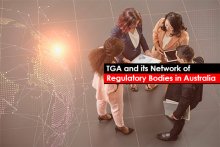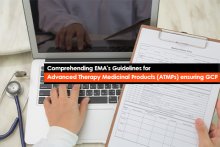With each year, Life Sciences industry is transforming in unpredictable ways, of course it is to better the end-user’s safety. The industry is progressing with technological advancements and the health authorities are equally striving to upgrade the existing Regulatory frameworks to align with market requirements. The Agencies are considering the industry point of view, too, to simplify the regulations. We have seen many such regulations in 2018. But what’s there in 2019?
From the Brexit effect to new Medical Device Regulations to continuous upgradation of electronic common technical document (eCTD) versions to many global market-entry pathways, there are a plethora of guidance documents, regulations and rules concerning Medicinal Products, Medical Devices, Cosmetics, Nutraceuticals etc. that are expected to come into effect and change the face of Life Sciences. To aid the manufacturers/sponsors/applicants in their efforts to be compliant and obtain quick market-entry approvals, we have decoded some of the upcoming Regulatory changes that are expected to influence your plans and strategies for 2019 and farther. Let’s look at them industry-wise.
Pharmaceuticals Regulatory Updates 2019 
New Regulation for Clinical Trials of Pharmaceuticals in EU
Clinical Trial Regulation EU No 536/2014 was introduced in European Union (EU) on June 16, 2014 to transform the rules for conducting clinical trials. The regulation was enforced to increase the standards of trials safety and transparency of trial information for the participants. It aims at fostering innovation and research while avoiding duplication of clinical trials or repetition of unsuccessful trials by creating an exclusive clinical trial portal and database. The agency will provide access to this information to public through the portal subject to rules of transparency. The regulation is expected to replace EU Clinical Trial Directive (EC) No. 2001/20/EC and national legislation that was put in place to implement the Directive. The portal was expected to go live in later part of 2019. But due to technical issues and Brexit impact which triggered the need to relocate the European Medicines Agency (EMA) office, the system is expected to go live in 2020. However, it is in medicinal product manufacturers’ benefit to align with the regulations while conducting clinical trials even before the portal becomes live.
TGA to Adopt PIC/S Guide to GMP PE009-13
Therapeutic Goods Administration (TGA) of Australia, is a member of the Pharmaceutical Inspection Cooperation Scheme (PIC/S), which is a non-binding, informal, cooperative arrangement between the multiple health authorities that regulate Good Manufacturing Practice (GMP) for medicinal products. In response to the identified risks to end-user health and ambiguity leading to misinterpretation and compliance risks, TGA has sought to adopt the latest guide of PIC/S for GMP for the pharmaceutical manufacturers. The guide is relevant to the country’s Mutual Recognition Agreements and assures equivalence to international markets. The first notification of the guide was made in September 2017 and the adoption period began from January 1, 2018. A transition period of one year has been given for companies during which the agency addresses the questions concerning the GMP. Beginning January 1, 2109 adoption of PIC/S Guide to GMP PE009 - version 13 shall become mandatory for Regulatory compliance.
EU Module 1 Implementation Guidance for eCTD Version 4.0
On October 11, 2018, the final version of implementation guidance (IG) for module 1 of eCTD version 4.0 for EU was published. The guidance is expected to be used in conjunction with International Council for Harmonization (ICH) eCTD IG. Currently, eCTD is regarded as the principal electronic submission format and the only electronic format accepted by the EMA and the national competent authorities of EU.
Falsified Medicines Directive to be Enforced from February 9, 2019
In 2011, the EC and the EMA commenced taken an action to amend Directive 2001/83/EC to address concerns of falsified medicines and threat of counterfeits under the Falsified Medicines Directive (FMD) (Directive 2011/62/EU). From February 9, 2019, the new directive and the medicine verification system it is expected to lay down will be applicable on all medicinal products. The two main features listed below make the label efficient to tackle counterfeit of medicines.
- Unique Identifier (UI): UI contains the serial number, product code, national reimbursement number, batch number and expiry date of the product.
- Anti-tampering Device (ATD): ATD is a device which verifies the details on packaging against the details encoded in the barcode. If there is any mismatch of product information, it is instantaneously identified.
With FMD enforcement, health authorities across EU can ensure that only quality medicines are at the disposal of end-users. However, it may be noted that manufacturers in other member states, such as Greece, Belgium and Italy have reportedly postponed this timeline till February 9, 2025.
Medical Devices Regulatory Updates 2019 
Revised Standard ISO 13485: 2016 Becomes A Mandate
The global standard for quality management system of Medical Devices, ISO 13485 has been a guide for device manufacturers, especially for those marketing their products in Europe. With the need for increased Regulatory supervision, the standard has been revised and published on March 1, 2016 as ISO 13485: 2016 and the device sponsors were given a three-year transition period. The revision emphasizes on risk-based approach. The notified bodies review and issue the ISO 13485 certificate as a first step towards compliance. With the deadline inching closer, ISO 13485: 2016 will be the new Medical Device Quality Management System standard from February 28, 2019, whose requirements must be met for continued marketing of the devices.
Health Canada Adopts MDSAP
Medical Device Single Audit Program (MDSAP) is an international initiative commenced by a group of health authorities. According to this program, an auditing organization can conduct single audit which is said to be accepted by multiple authorities in regards with Quality Management System (QMS) or Good Manufacturing Practice (GMP) requirements of a medical device. Australia, Brazil, USA, Canada and Japan ran a pilot of this program which ended in December 2016. Health Canada, has, however, stepped forward to accept the MDSAP certificate to declare a medical device’s (of Class II, III & IV) safety and efficacy including the software accompanying the device. It has terminated the existing Canada Medical Device Conformity Assessment System (CMDCAS) and will accept only MDSAP certificates from January 1, 2019.
Progression of MDR and IVDR Transition in EU
Although under transition from May 25, 2017, the EU Medical Device Regulation (MDR) and In Vitro Diagnostic Regulation (IVDR) are among the most prominent Regulatory updates concerning the medical devices in EU. Ever since their publication in 2017, organizations marketing their devices in EU member states have been striving to align with the renewed regulations in a phase-wise manner. The MDR fully replaces the old Medical Device Directive (MDD) from May 26, 2020 while IVDR will be fully effective from May 26, 2022. The transition time may seem long, but there are many Regulatory aspects that must be adhered to in individual phases. So, if you are a medical device manufacturer marketing your device in EU, ensure you are prepared for MDR compliance the earliest possible to avoid Regulatory hurdles.
Cosmetics Regulatory Updates 2019 
The National Health Regulatory Agency (ANVISA) of Brazil, on 22 November 2018, published a new standard - Resolution RDC 250/2018 related to the Official Gazette of the Union. The new resolution, related to Cosmetics labeling, was passed to enhance the agility of the cosmetics sector in Brazil and reduce the cost of labeling processes to the organizations.
With the new standard in effect, only changes that are related to safety and benefits of products will demand the submission of labeling or new art of labeling to the agency. It is also expected to eliminate the need for submission of labeling changes that do not pose a health risk, such as:
- data from customer service
- social name and
- addresses of the holder
Nutraceuticals Regulatory Updates 2019 
Final Rule of USFDA Nutrition Facts Label – Extension of Deadline
On May 27, 2016 United States Food and Drug Administration (US FDA) published a new Nutrition Facts label rule for packaged goods redefining label in such a way that it reflects new scientific information, including the link between diet and chronic diseases. In the final rule, the FDA has extended the compliance date in two specific cases that are listed below.
- For food products with sales more than $10 million sales, compliance date has been moved from July 26, 2018 to January 1, 2020
- For food products with sales less than $10 million sales, compliance date has been moved from July 26, 2019 to January 1, 2021
Manufacturers of food products in the United States of America (USA) should evaluate their market and plan accordingly to ensure compliance before the deadline approaches.
Brexit
Ever since the United Kingdom (UK) voted in favour of exiting from the EU, the Brexit move has grabbed attention from all industries as it is expected to trigger changes to a plethora of regulations. Among them, Life Sciences is one of the most affected industries, as the manufacturers marketing their products in the UK need to make multiple amendments to align with the evolving Regulatory framework. While, a number of amendments are yet to be finalized, we have listed a few instances where Brexit impact is expected to be significant.
- Companies with a common ‘Responsible Person’ (RP) for EU, should now appoint a new RP exclusively for UK
- If the RP is from the UK, the company must appoint a European natural or legal person for the position in EU region
- The label changes, product information templates might be subject to change
- Product approvals in UK being used in EU based on mutual agreements and vice versa will become invalid
- Applicants are facing ambiguity concerning new product submissions as to how to proceed due to lack of new Regulatory guidance documents for the UK market
- The Pharmacovigilance data gets reduced leading to less efficient post-marketing surveillance in UK
As part of the Brexit, recently the EMA has updated it’s relocation plans and the milestones have been updated in this pictorial. With the deadline for Brexit closer than ever (March 29, 2019), sponsors should evaluate their Regulatory preparedness by conducting gap analysis with the assistance of a Regulatory expert. Basing on the analysis, they should also take steps to ensure compliance in an expedited manner.
All in all, be it Pharmaceuticals, Medical Devices or Cosmetics, a continuous track of global Regulatory regime will be helpful to assure compliant market entry in 2019 and farther. How prepared are you to go compliant ready? Evaluate your existing processes, and try aligning them with new regulations, collate the accurate data, compile and publish it error-free, for successful submissions and quick reviews, approvals and global market-entry. Be informed. Be Compliant.
Tags: Regulatory Updates 2019, Life Sciences; Pharmaceuticals, Medical Devices, Cosmetics, Labeling, Packaging, EMA relocation, UK, Brexit, EU MDR, IVDR, FMD, 2019, Regulatory Heads up Regulatory Affairs,





